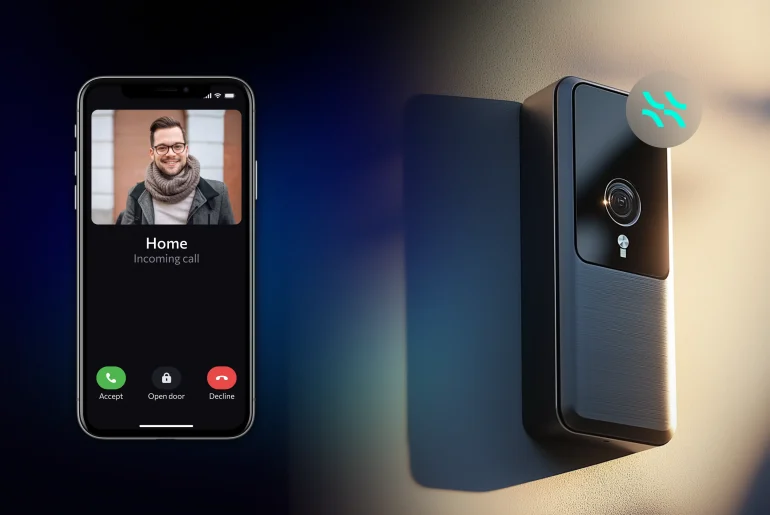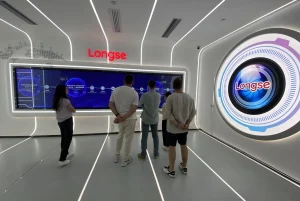A medida que los proveedores de servicios de telecomunicaciones e Internet (ISP) exploran nuevas formas de expandir sus carteras de servicios y desbloquear ingresos recurrentes, Smart Intercom Solution (SIaaS) está ganando terreno rápidamente. Con la explosión de edificios inteligentes, el control de acceso digital y la demanda de experiencias fluidas para los inquilinos, los intercomunicadores inteligentes están evolucionando desde una infraestructura basada en hardware a soluciones definidas por software y entregadas en la nube.
Pero para muchos proveedores de servicios que ingresan a este espacio, surge una pregunta crítica al comienzo del proceso: “¿Qué equipos podemos apoyar?”
El mercado de intercomunicadores está notoriamente fragmentado, con miles de modelos de fabricantes como Hikvision, Dahua, 2N, Akuvox, Comelit, Aiphone y muchos otros. Cada sistema varía en protocolos, funciones y requisitos de integración. Esta diversidad puede fácilmente convertirse en un cuello de botella para la implementación.
Entra el software independiente del proveedor: el gran facilitador de la solución de intercomunicación inteligente
El software de intercomunicación inteligente, independiente del proveedor, puede eliminar este problema. Estas plataformas están diseñadas específicamente para integrarse con la gran mayoría de los dispositivos de intercomunicación.
Este nivel de interoperabilidad permite a las empresas de telecomunicaciones y a los ISP:
- Infraestructura existente a bordo, tanto en edificios antiguos como en nuevos desarrollos.
- Lance servicios de intercomunicación inteligentes más rápido, sin limitaciones de hardware.
- Evite quedarse atrapado en un solo proveedor y mantenga la flexibilidad entre los segmentos de clientes.
- Reduce los costes de integración hasta en un 70%, comparado con sistemas propietarios.
La escala de la oportunidad para la solución de intercomunicación inteligente
- Actualmente hay más de 350 millones de dispositivos de intercomunicación instalados en todo el mundo y el modelo 70% aún funciona en sistemas IP cerrados o analógicos obsoletos.
- Se proyecta que el mercado global de intercomunicadores inteligentes crecerá de $2.4 mil millones en 2023 a más de $5.1 mil millones en 2028, y las unidades de viviendas multifamiliares (MDU), los edificios de oficinas y las comunidades cerradas impulsarán la mayor parte de la demanda.
- En regiones urbanas como la UE y América del Norte, más de 65% de nuevos proyectos inmobiliarios ahora requieren sistemas de acceso basados en IP administrados de forma remota.
- En Latinoamérica, entre el 30 y el 40% de los nuevos proyectos residenciales y comerciales en las principales ciudades ya especifican intercomunicadores IP gestionables remotamente. Brasil y Argentina son mercados clave en la adopción de intercomunicadores IP/video con integración móvil. Actualmente, hay más de 350 millones de intercomunicadores instalados en todo el mundo, y 70% aún operan con sistemas IP analógicos o cerrados obsoletos.
- En Asia Central, entre el 25 y el 351% de los nuevos desarrollos urbanos en capitales de Asia Central (p. ej., Nursultán y Tashkent) requieren actualmente intercomunicadores con capacidad IP, una tendencia al alza con las mejoras de infraestructura. Las iniciativas de urbanización y construcción inteligente (p. ej., en Kazajistán y Uzbekistán) indican un aumento en la implementación de IP.
- En MENA, rápida expansión de intercomunicadores IP y basados en la nube en los sectores de lujo y comercial Por lo tanto, es razonable estimar que entre 35 y 451 TP3T de los nuevos inmuebles urbanos en MENA ya están especificando sistemas de intercomunicación IP gestionables remotamente. Países del CCG como Emiratos Árabes Unidos y Arabia Saudita lideran la adopción de tecnología para edificios inteligentes: alrededor de 371 TP3T de los nuevos proyectos de edificios inteligentes incorporan sistemas de intercomunicación digital.
Caso de negocio para las telecomunicaciones y los proveedores de servicios de internet
Una vez resuelta la compatibilidad de hardware, los proveedores de servicios pueden centrarse en la monetización. Los servicios de intercomunicación inteligente pueden ofrecerse como:
- Suscripciones mensuales recurrentes (por ejemplo, $2–$10 por unidad por mes)
- Paquetes combinados con servicios de seguridad para el hogar, fibra o IoT
- Mejoras de funciones premium (archivado de videos, gestión de invitados, reconocimiento facial)
- Plataformas B2B de marca blanca para promotores inmobiliarios y administradores de propiedades
Los estudios de caso muestran que las empresas de telecomunicaciones que ofrecen SIaaS pueden lograr entre un 20 y un 40% más ARPU (ingresos promedio por usuario) dentro de las carteras de edificios inteligentes y una reducción de la pérdida de clientes de 18–25% cuando se combinan con servicios de banda ancha.
Beneficios de la solución de intercomunicación inteligente para propietarios e inquilinos de edificios
Estas soluciones se integran a la perfección con el hardware de intercomunicación existente. Permiten modernizar las propiedades sin la molestia de desmontar y reemplazar los sistemas antiguos. Con un enfoque móvil, los inquilinos pueden abrir las puertas a distancia, ver transmisiones de video en vivo y gestionar el acceso de los invitados desde cualquier lugar. Para los propietarios y administradores de edificios, esto significa mayor seguridad mediante registros de acceso digitales y seguimiento del cumplimiento normativo, además de menores costos operativos y una mayor satisfacción de los inquilinos.
- No es necesario desmontar ni reemplazar los sistemas de intercomunicación existentes
- Experiencia móvil: abra puertas desde cualquier lugar, vea videos en vivo y otorgue acceso a invitados
- Seguridad de edificios mejorada y registro de cumplimiento
- Costos operativos más bajos para administradores de propiedades y desarrolladores
¿Por qué ahora?
El momento es inmejorable. Varias tendencias se están alineando:
- Demanda de acceso sin contacto tras la pandemia
- Expectativas crecientes de los inquilinos nativos digitales
- Implementaciones de 5G, fibra y Wi-Fi 6 que hacen que los servicios de video en tiempo real sean viables a gran escala
- Fuerte crecimiento en inversiones en edificios inteligentes, que se espera alcancen los 127 mil millones de T/T a nivel mundial para 2027
Pensamientos finales
Lanzar un servicio de intercomunicación inteligente ya no tiene por qué ser un complejo rompecabezas de hardware: Aipix cambia el juego.
Gracias a su arquitectura independiente del proveedor, Aipix se integra perfectamente con más de 98.3% de equipos de proveedores de intercomunicación y VSaaS a nivel mundial, desde sistemas analógicos hasta unidades modernas basadas en IP, eliminando así los problemas de compatibilidad para las telecomunicaciones y los proveedores de servicios de internet (ISP). Gracias a su API abierta y fácil de usar para desarrolladores, Aipix permite una integración rápida y sencilla en ecosistemas existentes sin depender de un proveedor.
Pero Aipix va mucho más allá de la mera funcionalidad de intercomunicador inteligente.
Es una plataforma multiservicio que unifica la videovigilancia en la nube (VSaaS), intercomunicador inteligente y análisis de video en una única solución escalable. Esto significa que los proveedores de servicios pueden ofrecer servicios de valor añadido como reconocimiento facial, archivado de video e información sobre el comportamiento, todo desde una única plataforma.
Para las telecomunicaciones y los proveedores de servicios de Internet, esto significa:
- Tiempo de comercialización más rápido sin restricciones de hardware
- Ingresos recurrentes de servicios de valor añadido (VAS) agrupados
- Mayor retención de clientes a través de experiencias de inquilinos integradas y priorizadas desde el punto de vista móvil
- Crecimiento escalable en los mercados más amplios de edificios inteligentes y vigilancia.
En esencia, Aipix no es solo un intercomunicador como servicio: es una infraestructura para la próxima generación de servicios de edificios inteligentes.
Ha llegado el momento de que las telecomunicaciones y los proveedores de servicios de internet (ISP) vayan más allá de la mera conectividad y asuman su papel como orquestadores de servicios en el ecosistema de los edificios inteligentes, con Aipix como base para el futuro. ¡Contáctanos ahora!





